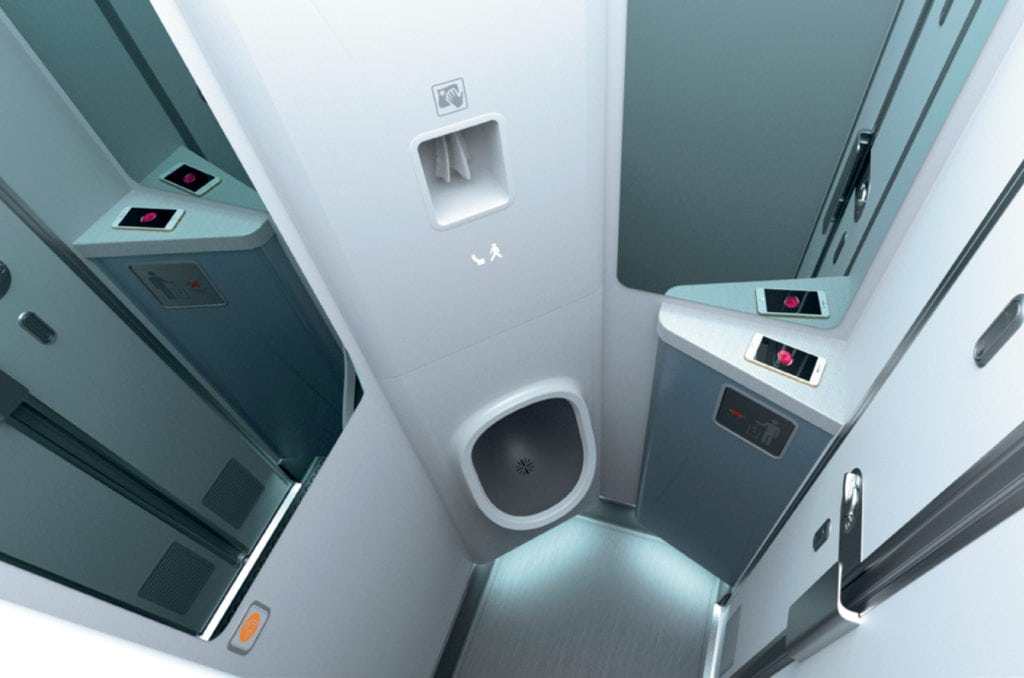
APEX Insight: From nose powdering to teeth brushing, passengers are using lavatories to satisfy diverse bathroom needs. Can airlines adopt a more streamlined approach?
In recent years, airlines have reduced the size and number of lavatories to squeeze even more seats into the cabin. But more passengers means even bigger queues for the washroom, especially on long-haul flights when people are brushing their teeth and touching up their makeup.
JAMCO, the sole lavatory supplier for Boeing’s wide-body aircraft, has come up with a way to address the issue. Its new Lav-Com concept consists of a centralized sink and mirror space alongside multiple sink-less lavatories – much like the setup in most restaurants or hotels.
This convenient setup localizes passengers in a designated area specific to their needs. And, by situating the Lav-Com module in the aft area of the aircraft, away from seated passengers, the usual queuing in aisles, which can interrupt the meal service, would be avoided, the company says.
The usual queuing in aisles, which can interrupt the meal service, would be avoided. – JAMCO on Lav-Com
Zodiac Aerospace has also taken inspiration from lavatory configurations on the ground: Its Durinal design replaces one of the regular 60-by-30-inch lavatories in economy class with two 30-by-30-inch urinals – each with its own lockable door – to accommodate the male “quick visit.”
Besides decreasing the lavatory cycle time, Zodiac believes the knock-on effect of a reduction in “male splash-zone contamination” in the conventional toilet could improve the passenger experience for women. In fact, Zodiac’s director of Marketing, Events and Cabin Communications, Wampie Kegel, says the company is “running a parallel exercise on a women-specific design for the neighboring conventional toilet.”
The supplier is no stranger to aircraft lavatory design, having been a 2017 Crystal Cabin Award finalist in the Greener Cabin, Health, Safety and Environment category for its Revolution Vacuum Toilet, which uses recycled materials and 33 percent less water.
With the Durinal concept, Kegel says, “Much of the cost reduction derives from dramatic module simplification.” The design opts for antibacterial wipes instead of a wet-wash basin and reduces the physical furniture, which, Kegel notes, would greatly simplify matters, result in weight savings and “be reflected in the day-to-day running and maintenance efforts.”
Will passengers mind? Kegel thinks not: “Antibacterial wipes are common today, whether at home, at a festival or outside a grocery store. They are even flying on regional aircraft where space negates the use of conventional wet systems.” And, even with Durinal, there will still be other conventional lavatories on board for those who need the wet-wash basin experience.
“Restroom Redesign” was originally published in the 8.3 June/July issue of APEX Experience magazine.


